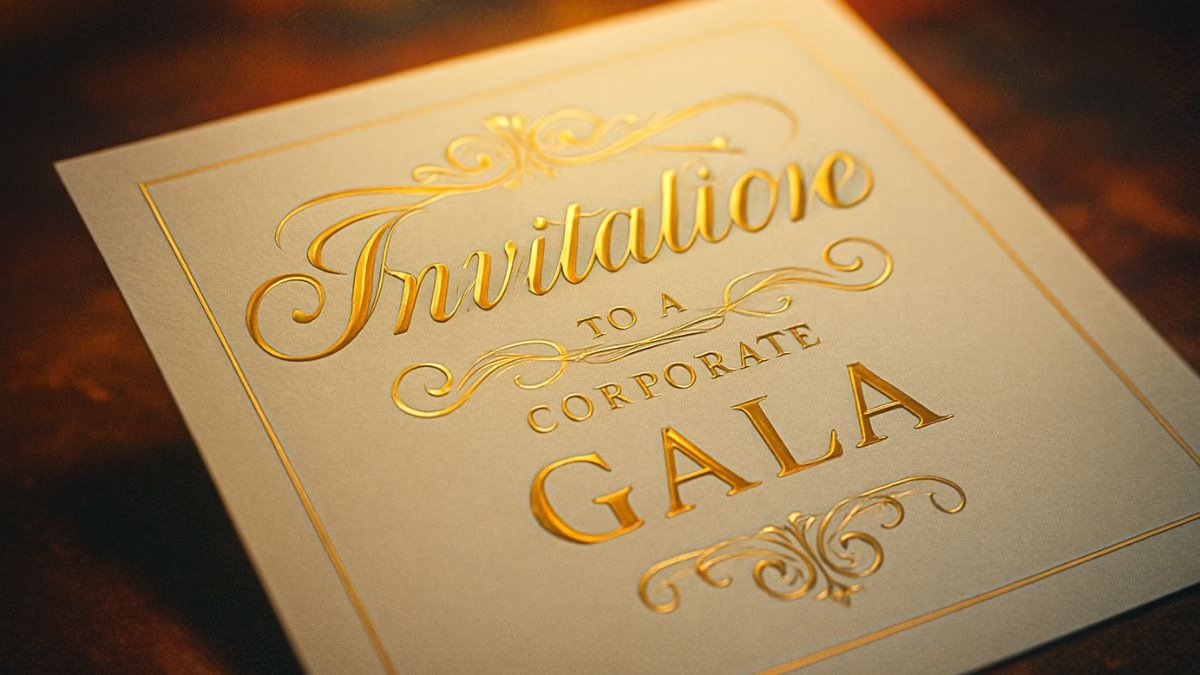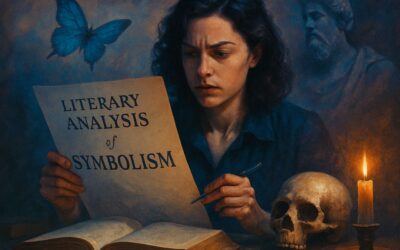How to Approach This Lesson
Welcome! Today we’re shifting gears to a different but crucial writing skill: formal communication. In many professional settings and high-level English exams, you need to know how to write with a tone that is respectful, clear, and follows established conventions.
This lesson is a practical walkthrough of that process. We’re going to build a formal invitation from the ground up, paying close attention to phrasing, structure, and tone. Follow along, and you’ll come away with a reliable template you can adapt for any formal invitation you need to write.
The Challenge: A Formal Corporate Gala Invitation
Here is our task: Compose a formal invitation letter for a corporate gala.
This type of writing is all about precision and etiquette. The goal is to make the recipient feel valued and to provide all the necessary information in a sophisticated and organized manner. There’s less room for casual language and more emphasis on established phrases.
It might seem rigid, but it’s actually quite simple once you know the formula. Here’s the plan we’ll follow to write a perfect formal invitation:
- Step 1: Identify the Key Components. We’ll list every piece of information that absolutely must be in the invitation.
- Step 2: Master the Formal Tone. We’ll look at the kind of language and phrasing that signals formality and respect.
- Step 3: Structure the Letter. We’ll map out where each component should go, from the letterhead to the closing.
- Step 4: Draft the Invitation. We’ll write a first version, focusing on getting the structure right. We’ll look at some common mistakes.
- Step 5: Polish the Final Letter. We’ll review and refine our draft to create a flawless final product.
Let’s imagine our company is “Innovate Corp” and they are hosting their “Annual Starlight Gala.”
Let’s Get Writing: A Step-by-Step Walkthrough
Step 1: Identifying the Key Components
A formal invitation must be crystal clear. Missing a single detail can cause confusion. Here’s our checklist:
- Who is inviting? (The host: Innovate Corp)
- Who is invited? (The recipient, e.g., “Mr. John Smith”)
- What is the event? (The Innovate Corp Annual Starlight Gala)
- Why are they being invited? (To celebrate a year of success, to honor employees, etc.)
- When is it? (Date and time: e.g., Friday, November 14th, 2025, at 7:00 PM)
- Where is it? (Venue: e.g., The Grand Ballroom, Park Plaza Hotel)
- Dress Code? (e.g., Black Tie, Formal Attire)
- RSVP Information: (The deadline and method for responding)
Step 2: Mastering the Formal Tone
Formal writing uses specific vocabulary and sentence structures.
- Avoid contractions: Use “we would be” instead of “we’d be.”
- Use formal phrases:
- “We are delighted to invite you…”
- “request the pleasure of your company…”
- “to celebrate the occasion of…”
- Be polite and respectful: Use titles like “Mr.,” “Ms.,” “Dr.”
- Use the passive voice where appropriate: “Your presence is requested” can sound more formal than “We request your presence.”
Step 3: Structuring the Letter
A formal letter has a clear, conventional structure.
- Your Company’s Letterhead: (Company Name, Address, Contact Info)
- Date
- Recipient’s Name and Address
- Salutation: (e.g., “Dear Ms. Davis,”)
- The Invitation Itself (Body): State the event and the host. Provide all key details (what, where, when).
- Additional Information: Mention the dress code or any special notes.
- RSVP Request: Clearly state the RSVP deadline and how to respond.
- Closing: (e.g., “Sincerely,”)
- Signature
- Typed Name and Title of the Host/Sender
Step 4: Drafting the Invitation (with Common Mistakes)
Let’s write a first draft and see where we might go wrong.
- Common Mistake (Too casual): “Hey Jane, We’re having our annual party and would love for you to come. It’s at the Park Plaza on Nov 14. Hope to see you there! RSVP soon.”
This is fine for a text message to a friend, but it’s a disaster for a corporate gala. It lacks all the necessary details and the required tone.
- A Better First Draft (Following the structure):
Innovate Corp
[Company Address]
July 26, 2025
Ms. Jane Davis
[Her Address]
Dear Ms. Davis,
We would like to invite you to the Innovate Corp Annual Starlight Gala.
The event is on Friday, November 14th, 2025, at 7:00 PM at The Grand Ballroom, Park Plaza Hotel. The purpose of the event is to celebrate our company’s success this year.
The dress code is formal.
Please RSVP by October 31st.
Sincerely,
[Signature]
Alex Chen
Chief Executive Officer
This is much better! It has the right structure and details. But we can make the language even more elegant and formal.
Step 5: The Polished, Final Version
Let’s refine the language to add that final layer of sophistication. We will use more traditional, formal phrasing.
[Innovate Corp Letterhead]
July 26, 2025
Ms. Jane Davis
Senior Partner
Global Tech Solutions
[Recipient’s Address]
Dear Ms. Davis,
The Board of Directors of Innovate Corp requests the pleasure of your company at the Annual Starlight Gala, a celebration of a remarkable year of innovation and partnership.
The gala will be held on:
Friday, the fourteenth of November
Two thousand twenty-five
at seven o’clock in the evening
The Grand Ballroom
Park Plaza Hotel
123 Celebration Avenue
The dress code for the evening is Black Tie.
Kindly RSVP by October 31st by contacting our events coordinator, Ms. Emily White, at e.white@innovatecorp.com or by telephone at (123) 456-7890.
We look forward to celebrating with you.
Sincerely,
[Signature]
Alex Chen
Chief Executive Officer
Innovate Corp
Notice the changes: “requests the pleasure of your company” is classic formal phrasing. Writing out the date and time adds a touch of elegance. Providing specific RSVP contact information is professional and helpful.
Let’s Wrap Up & Your Next Challenge
There we have it—a perfectly composed formal invitation. The key wasn’t creativity, but rather an understanding of convention, tone, and structure.
Key Takeaways:
- Formality is Key: Avoid casual language, slang, and contractions.
- Structure is Everything: Follow the established format of a formal letter.
- Clarity is Crucial: Provide all necessary information (Who, What, Where, When, Dress Code, RSVP) without ambiguity.
- Use Traditional Phrasing: Phrases like “request the pleasure of your company” instantly set a formal tone.
Your Optional Writing Challenge:
Ready to try on your own? Your task is to compose a formal letter inviting a respected professor to be the keynote speaker at your university’s upcoming academic conference.
Remember to include all the key details: the name of the conference, the theme, the date and time of their proposed speech, and what you are offering (e.g., travel expenses, an honorarium). You’ll need to be respectful, clear, and persuasive. This is the perfect way to practice and solidify what you’ve learned today. Good luck!










0 Comments